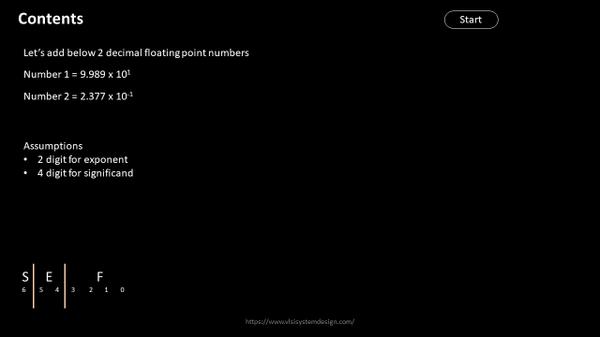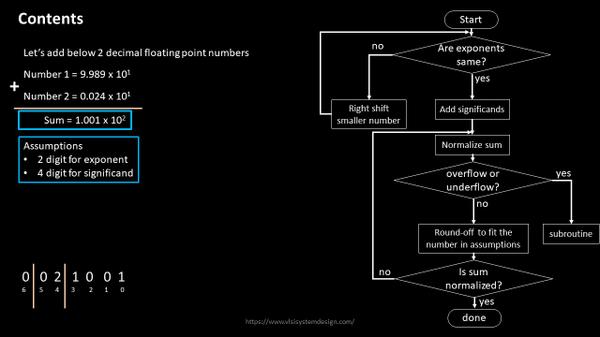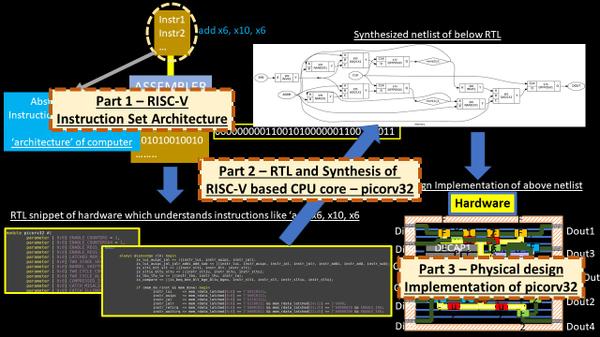This title can help you build a business
Let’s start with the highlighted word “floating-point addition”
Then start reading the title of this blog from beginning. First thing which comes in the title is “concept”, which is the simple one. It says, if I want to add 2 floating-point numbers, I simply add them. Second, “algorithm” is the details for a computer, how it will add 2 floating-point numbers.
Third, which is “RISC-V”, which deals with binary numbers, describes how can you use same concept and algorithm to do a “binary floating-point addition”
This topic is very trivial, and it starts from “problem statement” in below image which says – I want to add numbers:

With problem statement, comes a lot of specifications and assumptions, which, in above case is, you can allot only 4 digits for fraction and 2 digits for exponent (1 digit for sign and 1 digit for exponent value).
Once you are being given specifications from user, that’s where your job as an engineer should start i.e. build an algorithm for achieving this. This problem statement seems to be simple to do, so I will just give you the algorithm in below image:

One close observant will find out, how the resolution of the answer has changed, due to number 2 getting changed, due to the specifications given by the user. Here’s the challenge – How do you convince the user to spend more for money, which can be used to pack more digits, for accuracy? Because adding more digits is like adding hardware, which is expensive
Next, is you write an RTL to build the hardware for above specifications and algorithm. Finally, you physical design and build an SoC out of your algorithm.

In the bottom left of above image is the “hardware” – your SoC
The last thing that remains is – Sell your SoC..
And finally, you are in business. In above blog, I gave a good starting point for entrepreneurs. The above are the steps or “algorithm” that perfectly fits in an entrepreneur’s life looking forward to starting-up their own VLSI or computer company
There is another purpose of this blog, and that is an introduction to how we are going to achieve RISC-V based floating point addition and multiplication algorithms in my existing RISC-V courses.
Stay tuned and happy learning…
